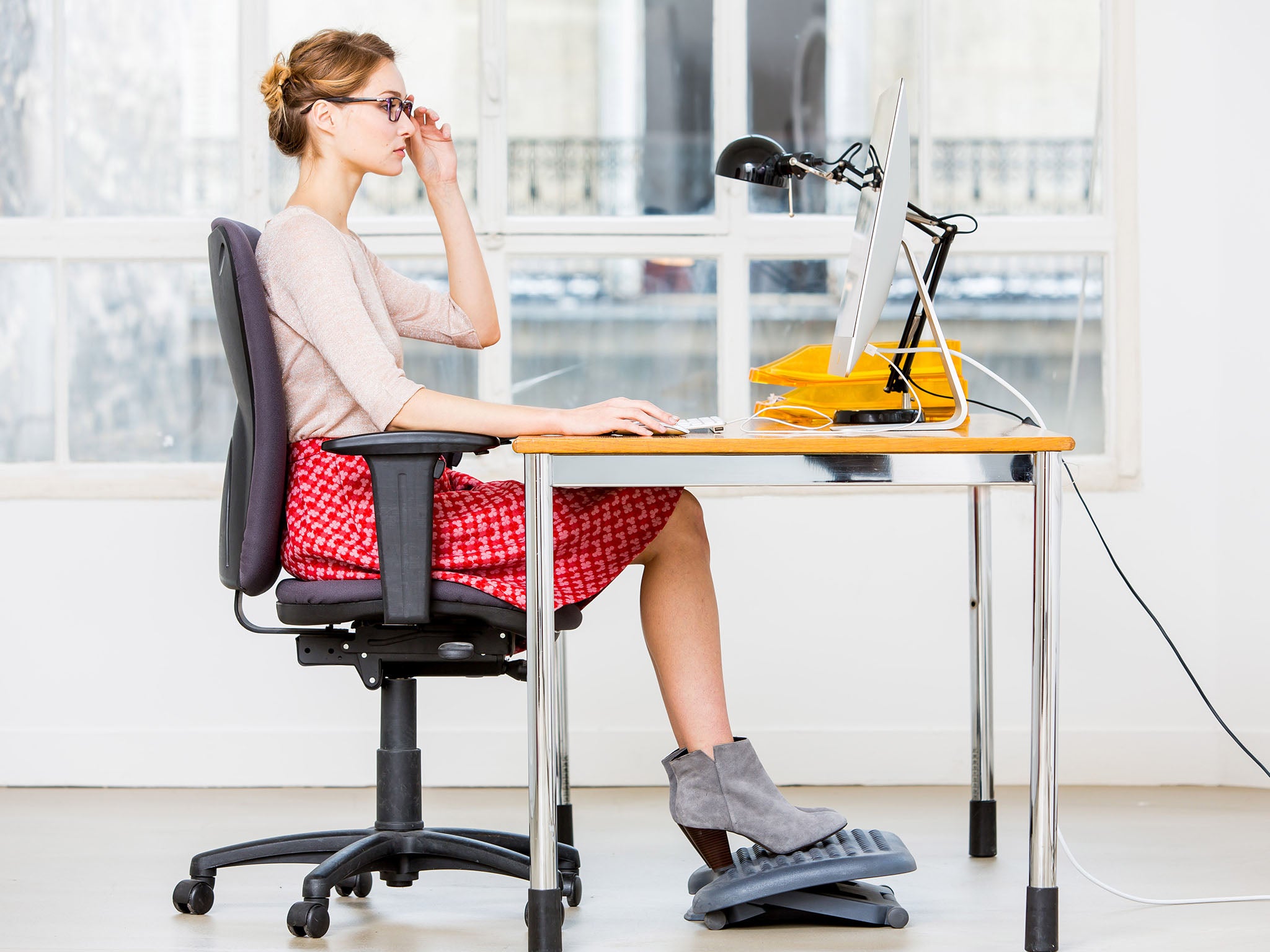Body posture: Desk jobs and slouching take their toll, but it's never too late to straighten up
Siobhan Norton's first ever personal training session didn't quite go to plan

Your support helps us to tell the story
From reproductive rights to climate change to Big Tech, The Independent is on the ground when the story is developing. Whether it's investigating the financials of Elon Musk's pro-Trump PAC or producing our latest documentary, 'The A Word', which shines a light on the American women fighting for reproductive rights, we know how important it is to parse out the facts from the messaging.
At such a critical moment in US history, we need reporters on the ground. Your donation allows us to keep sending journalists to speak to both sides of the story.
The Independent is trusted by Americans across the entire political spectrum. And unlike many other quality news outlets, we choose not to lock Americans out of our reporting and analysis with paywalls. We believe quality journalism should be available to everyone, paid for by those who can afford it.
Your support makes all the difference.My first ever personal training session was off to a bad start. "Let's see you do a squat," he said. "Easy-peasy," I said. "OK. What you've just done there is a perfect deadlift - that's not a squat." "Oh."
What I thought was going to be a session of me showing off my strength with SIX3NINE's Dan Baldwin was anything but. In fact, most of it involved me standing perfectly still. Apparently I'm not doing that very well either.
I had a fair idea my posture wasn't poker straight - in Irish dancing classes in my youth, my teacher made me dance with a broom handle behind my back, muttering in exasperation about rounded shoulders. Years of desk jobs hadn't improved matters. And it turns out my posture wasn't just suffering at my desk, but in the gym, too.
There are two categories of posture - static and dynamic. With dynamic postural problems, it's all about how you move - if you're moving incorrectly, you may be constantly putting too much pressure on some muscles, while giving others an easy ride. It didn't take long for Dan to pinpoint some problems - I was favouring the right-hand side of my body, probably a hangover from an old injury. My rounded shoulders (yes, she was right), and slightly winged shoulder blades meant I was overcompensating with other parts of my back when lifting weights, which explains the regular cricks in my neck. My calves were tight enough to be almost immobile thanks to my glutes not working hard enough (AKA lazy ass). And, yep, I don't know how to squat.
Bad posture at the gym can result in injury and even have a long-term impact on your health. It can also have an impact on how your body looks, meaning the hours you're clocking up in the gym might never result in the body you want. Studies have shown that poor posture can also cause constipation and exacerbate stress or depression.
"The way we hold ourselves while sitting or standing can have a huge impact on the activation of certain muscle groups - some will become locked in a shortened position and others will become locked in a lengthened position, unable to shorten effectively," says Russ Harris, head of education at SIX3NINE. "This imbalance creates skeletal misalignments. The effect of this is a reduction in the range of motion at the affected joints. A lack of proper range causes movement dysfunctions and can lead to pain, both of which have huge detrimental effects on your ability to work out effectively."
Pain and injury are never desirable, but, other than quitting the day job, how do you correct this? Happily, most postural problems can be corrected over time, from flat feet to hunched shoulders. According to Harris, you need to focus on releasing overactive muscles before the underactive ones can properly engage. "If you spend a long time sitting, muscles around your chest, hips and thighs will likely be overactive. Sixty seconds applying bodyweight pressure on a foam roller in these areas will help to reduce excessive tension. Static stretching the same areas of tightness immediately after foam rolling will then help to rebalance the length-tension relationships between opposing muscle groups."
Central to good posture is a strong core, and a good core will give you a great base to revolutionise your training. Exercises like Pilates and yoga are great for helping you to engage and strengthen your core muscles, including stomach, lower back, obliques and pelvic floor. "Squeezing and holding tension in the glutes and core with exercises such as planks and glute bridges, again for around 60 seconds until you can feel the muscles 'firing up' will help support changes to the way your body functions and moves," says Harris.
Working on your posture must, however, go beyond the gym. "Awareness is the best tool we have to combat bad posture," says Harris. "Being aware of when you're slouching at the desk and setting reminders to check your posture can be vital in keeping posture at the forefront of your thoughts throughout the day.
"Moving away from your desk when possible and regularly stretching can be the best form of damage limitation."
Join our commenting forum
Join thought-provoking conversations, follow other Independent readers and see their replies
Comments